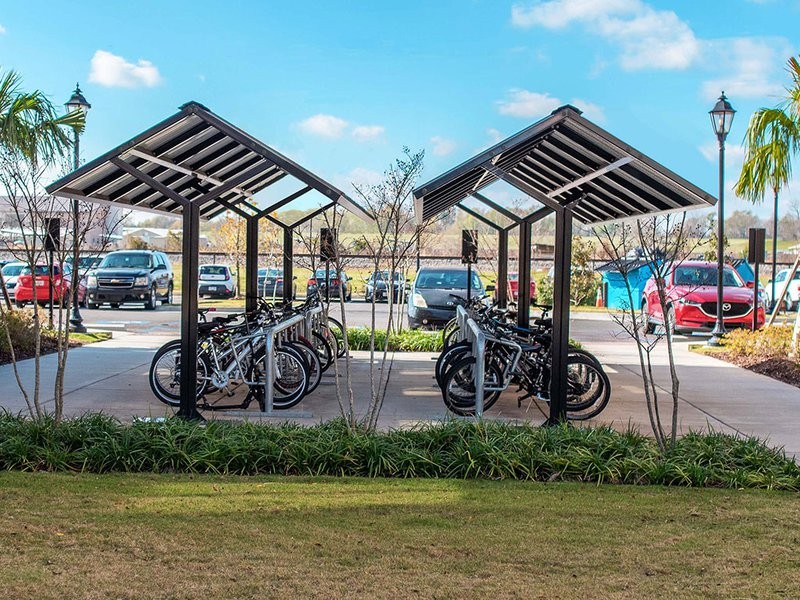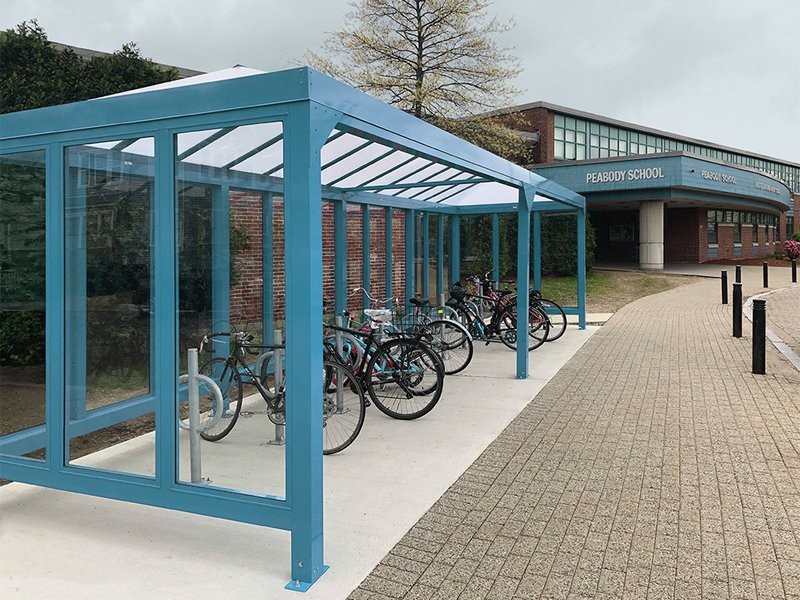Why Modular Bike Parking Shelters Are the Future of Urban Planning
Modular bike parking shelters are shaping the future of urban infrastructure. These adaptable, cost-effective solutions seamlessly integrate into cities, promoting sustainable mobility and supporting the growing demand for cycling. As urban areas prioritize greener transportation, investing in well-designed outdoor bike shelters is essential for fostering a bike-friendly environment that benefits both commuters and city planners alike.
The Growing Demand for Cycling Infrastructure
Cities worldwide are embracing cycling as a viable mode of transportation, spurred by environmental awareness, health benefits, and urban congestion concerns. With more people choosing bicycles for their daily commutes, the need for secure and accessible bike parking solutions is greater than ever. The shift toward sustainable transportation is not just a trend—it’s a necessity in modern urban planning.
Expanding cycling infrastructure brings significant benefits, including reduced carbon emissions, less traffic congestion, and healthier communities. However, without proper facilities, such as outdoor bike shelters, cyclists may struggle to find safe and convenient places to store their bikes, potentially discouraging ridership. Addressing this challenge with modular shelters ensures that cities can keep up with increasing demand while enhancing the overall cycling experience.
The Environmental and Urban Planning Benefits of Modular Bike Shelters
Modular bike shelters are prefabricated structures designed to offer secure, weather-resistant storage for bicycles. Unlike permanent fixtures, these shelters can be installed quickly and expanded or relocated as needed. Their versatility makes them ideal for both urban centers and suburban developments.

Photo by Handi-Hut
Investing in modular outdoor bike shelters is more than just a convenience for cyclists—it is a forward-thinking strategy that supports sustainable urban development. These shelters help reduce traffic congestion, improve air quality, and encourage healthier lifestyles by making cycling a more practical commuting option. As cities evolve to meet the needs of growing populations, integrating well-placed bike shelters into infrastructure plans becomes crucial for fostering a seamless, eco-friendly transportation network.
Sustainability and Green Urban Development
Encouraging cycling through accessible bike parking solutions directly supports environmental sustainability. By reducing reliance on cars, cities can cut down on greenhouse gas emissions and promote cleaner air. Outdoor bike shelters serve as a crucial component of this shift, making biking a more practical choice for daily transportation.
Additionally, many modular shelters can be integrated with solar-powered lighting and eco-friendly materials, further aligning with green city initiatives. As urban planners look for ways to reduce carbon footprints, investing in sustainable bike infrastructure is a logical and impactful step forward.
Optimizing Space in Urban Environments
One of the biggest challenges in city planning is efficient space utilization. Traditional bike parking racks can take up valuable sidewalk space, leading to congestion and accessibility issues. Modular outdoor bike shelters provide a structured and space-efficient alternative, helping to keep public areas organized while offering cyclists dedicated parking areas.
Cities can strategically position these shelters near transit stations, office buildings, and residential areas to create a well-connected cycling network. Thoughtful placement enhances accessibility and encourages more people to incorporate biking into their daily routines.
Cost-Effective and Scalable Solutions
Modular bike shelters present a cost-effective alternative to traditional parking solutions. Their prefabricated nature allows for quick installation, reducing labor and construction costs. Additionally, since these shelters can be expanded or relocated, cities and businesses can adapt their bike parking infrastructure based on evolving needs without significant financial investment.
For municipalities and private organizations looking to enhance bike accessibility, modular shelters offer a flexible and budget-friendly approach. Compared to permanent structures, they require less maintenance and can be upgraded with new features, such as smart locking systems, as technology advances.
Integrating Outdoor Bike Shelters into Public Spaces
Seamless integration of bike shelters into urban landscapes is key to their effectiveness. Successful implementation requires collaboration between city officials, businesses, and transit authorities to ensure that shelters are placed in high-traffic areas where they will be most useful.
Strategic placement near public transit stations encourages multi-modal commuting, allowing cyclists to combine biking with bus or train travel. Additionally, businesses and educational institutions can install outdoor bike shelters to accommodate employees and students who prefer cycling over driving, fostering a culture of sustainable transportation.

Photo by Handi-Hut
Urban planners should also consider incorporating bike shelters into large-scale infrastructure projects, such as transit-oriented developments and pedestrian-friendly zones. This holistic approach ensures that cycling remains an integral part of city mobility plans rather than an afterthought.
The Future of Modular Bike Parking Shelters
As cities continue to grow, the need for adaptive infrastructure becomes increasingly important. The future of outdoor bike shelters lies in their ability to evolve alongside urban landscapes. Innovations such as integrated security systems, electric bike charging stations, and smart bike parking technology are already transforming these shelters into multifunctional assets.
With the right investment and planning, modular bike shelters can become a staple of modern cityscapes, making cycling a more attractive and viable transportation option. By prioritizing flexible bike parking solutions, urban planners can ensure that cities remain accessible, sustainable, and forward-thinking in their approach to mobility.
Investing in a More Bike-Friendly Future with Handi-Hut
At Handi-Hut, we specialize in designing high-quality modular bike shelters that enhance urban mobility and promote sustainable transportation. Our outdoor bike shelters are built with durability and functionality in mind, ensuring that cyclists have a secure and weather-protected place to park their bikes.
We offer a variety of customizable bike shelters, including our Guardian Bike Shelters, designed for maximum security and ease of use. Our solutions can be seamlessly integrated into transit hubs, business districts, and educational institutions, supporting cities in their efforts to create bike-friendly environments.
Handi-Hut also provides other shelter solutions that improve public spaces, such as transit shelters, smoking shelters, and covered walkways. Each product is designed with the same commitment to quality and functionality.
Explore our full range of bike shelters and see how Handi-Hut is leading the way in modular bike parking solutions. Contact us today to discuss how our innovative designs can enhance your cycling infrastructure.
